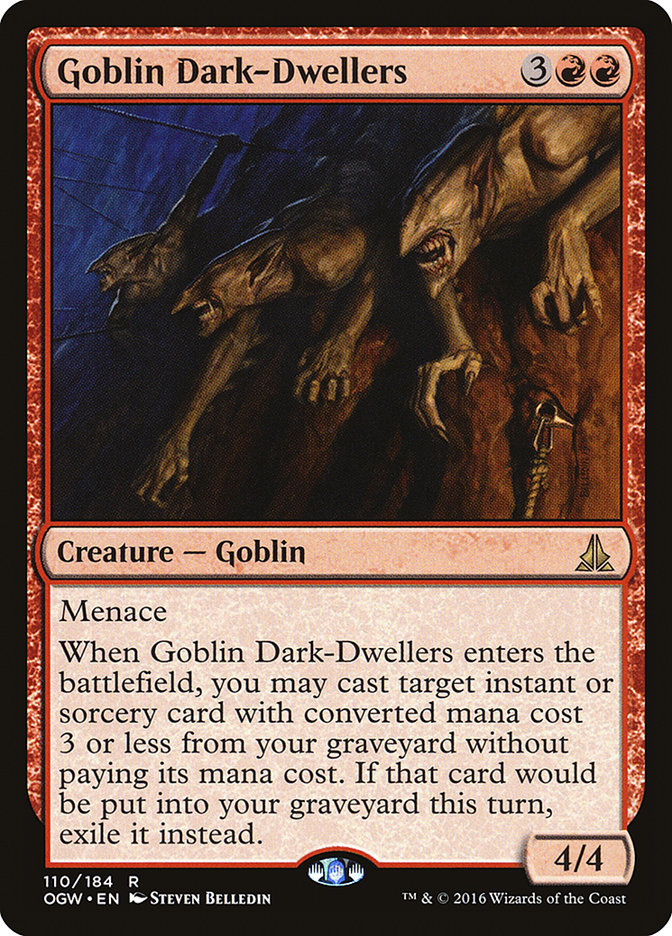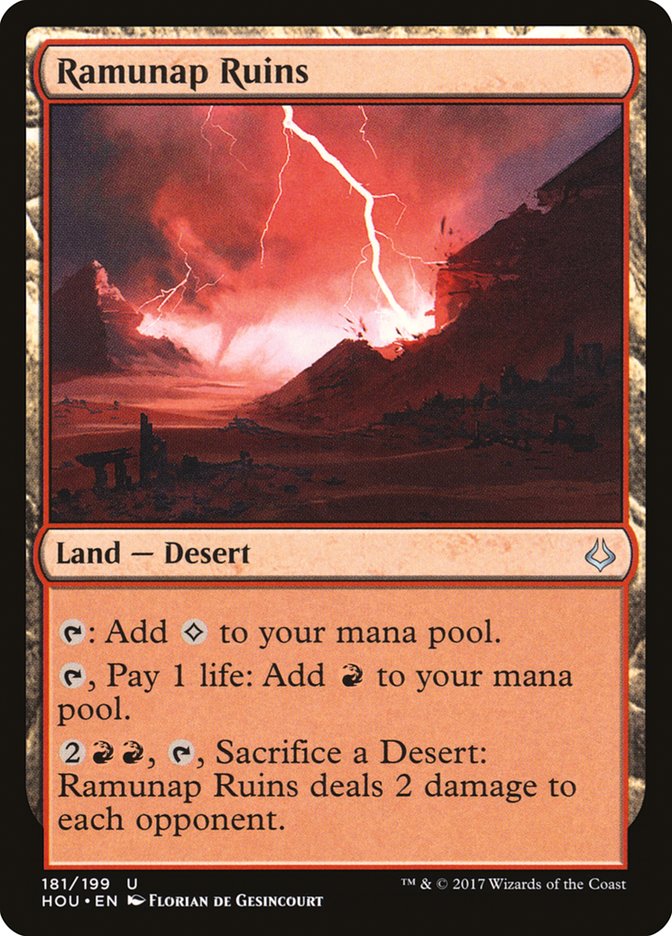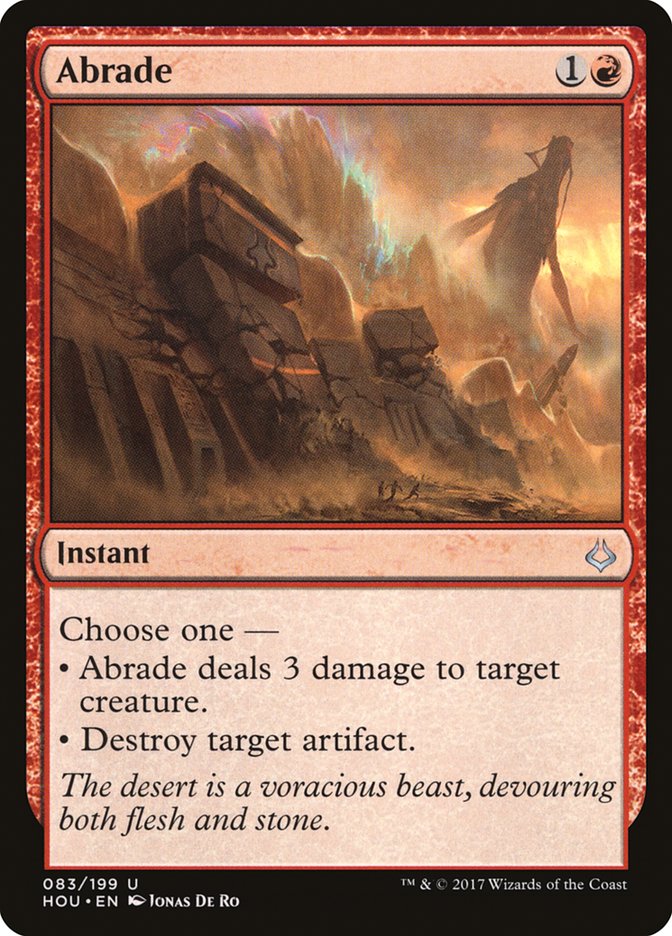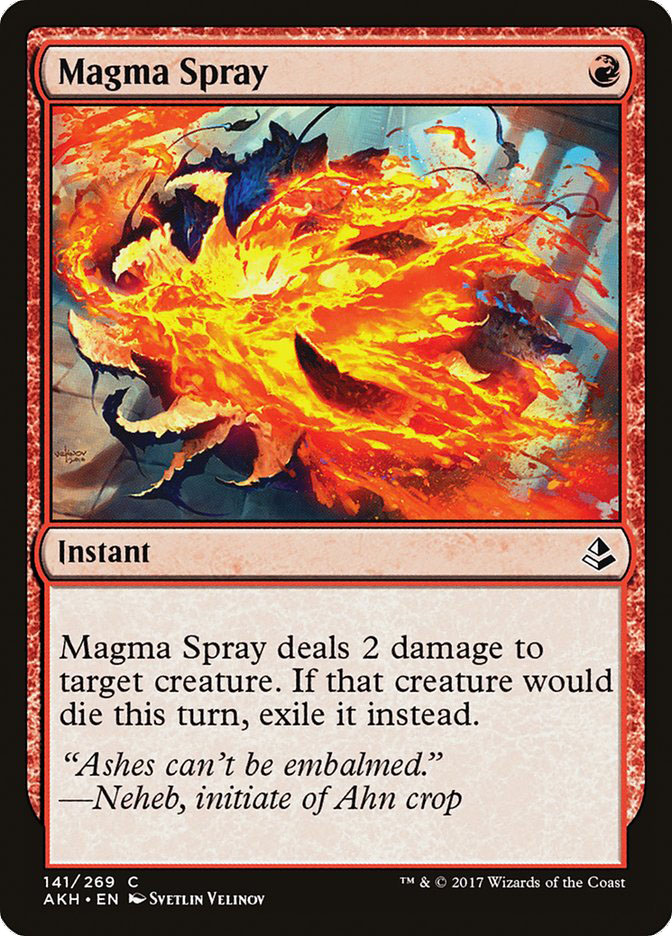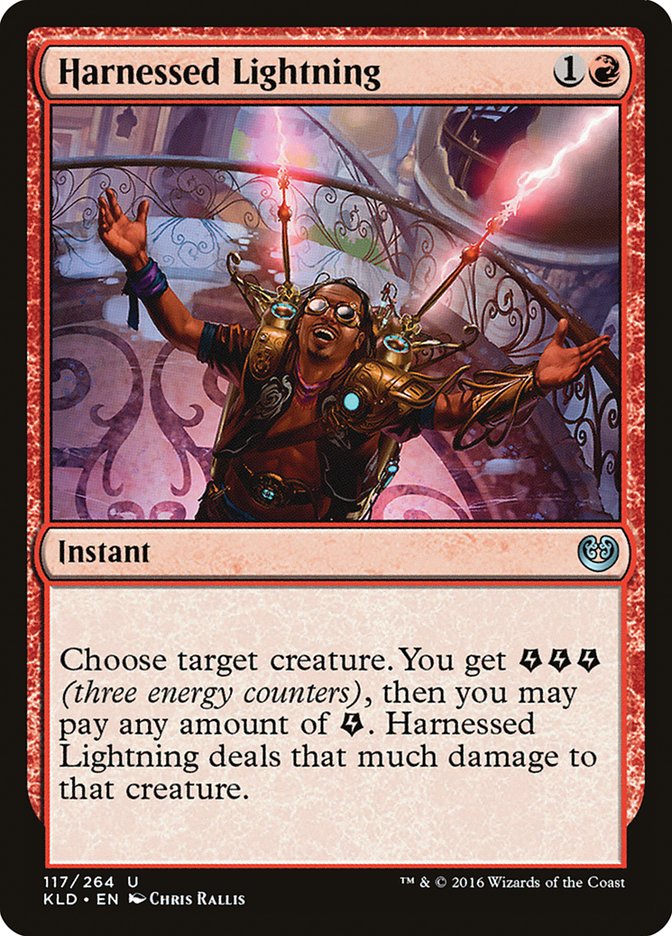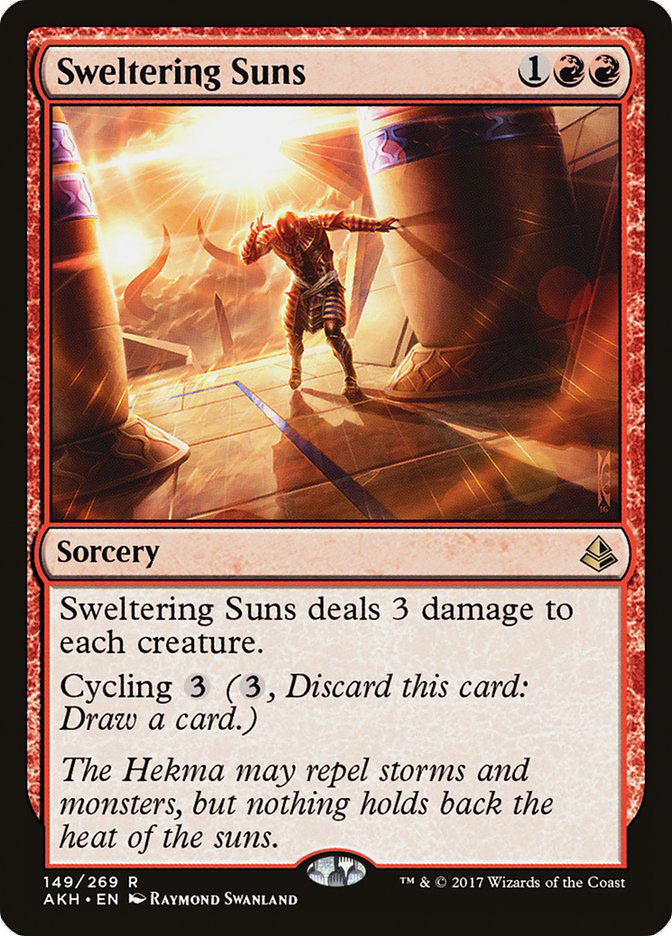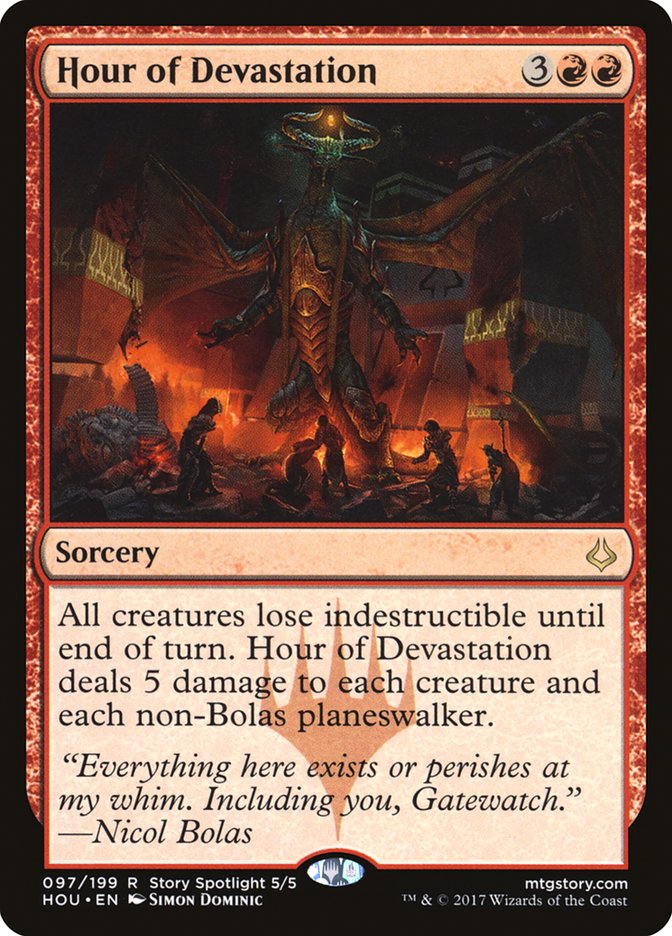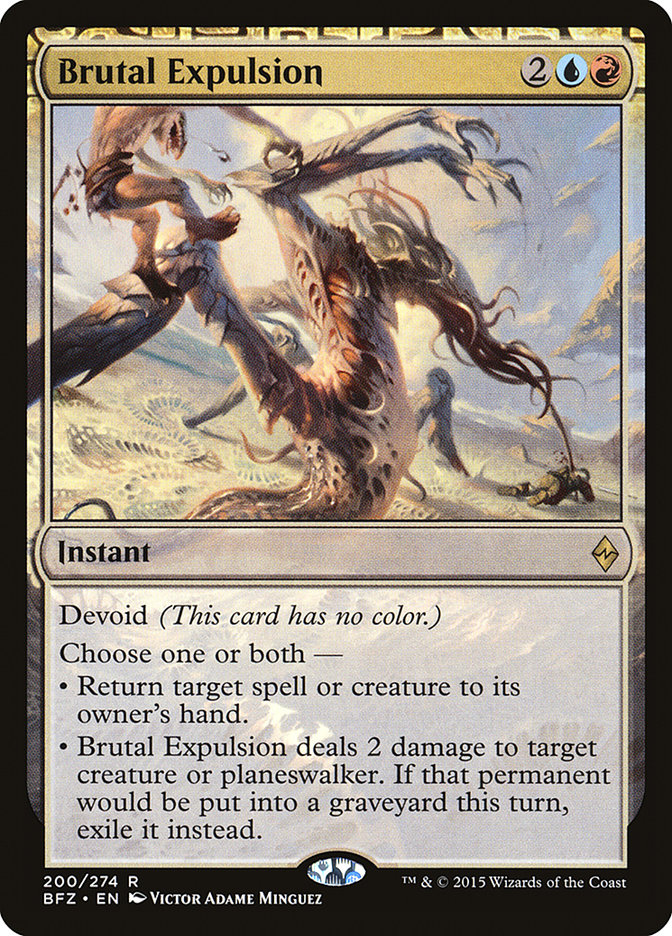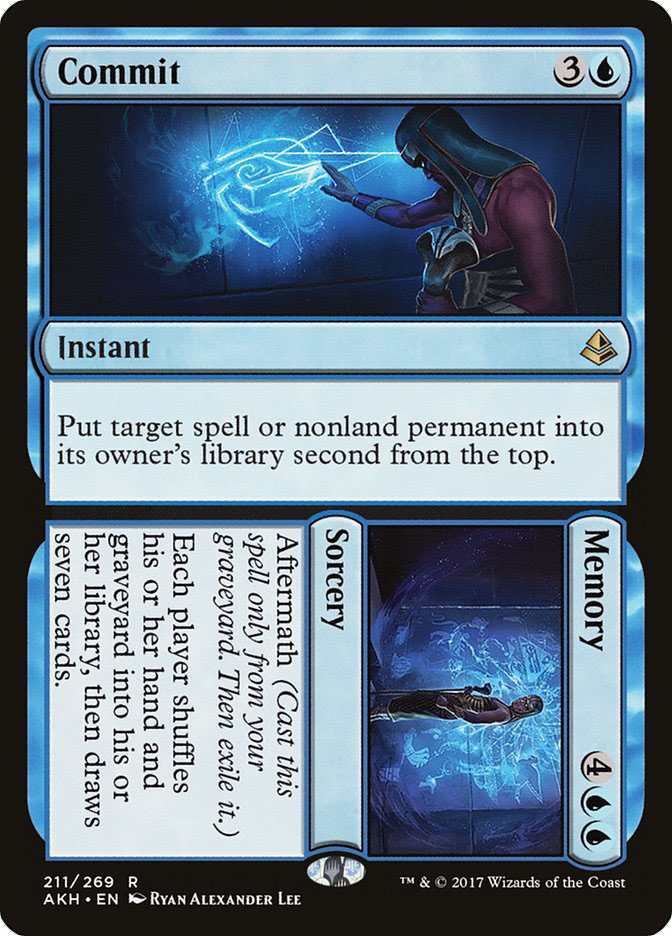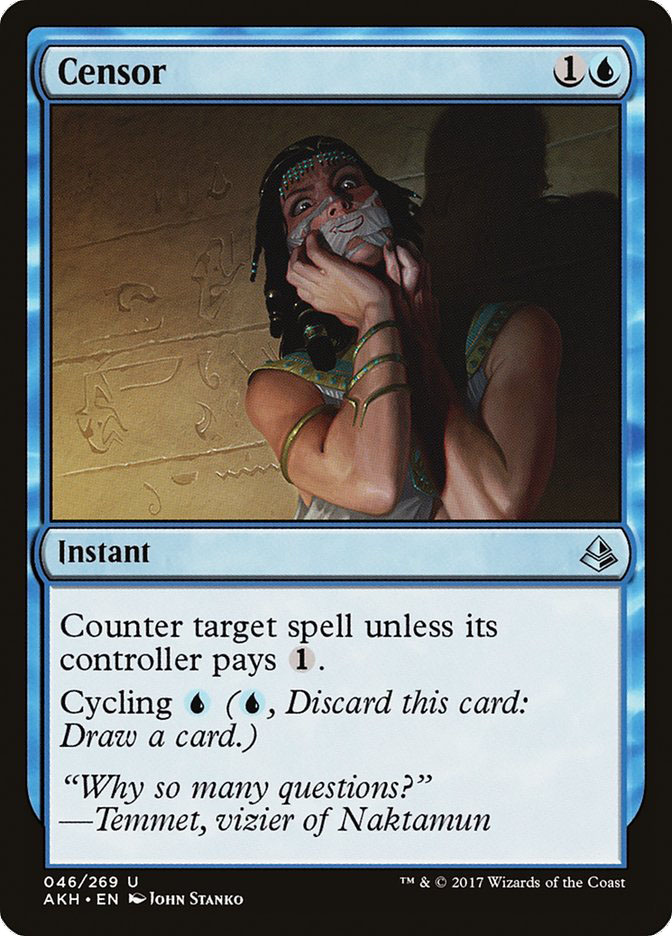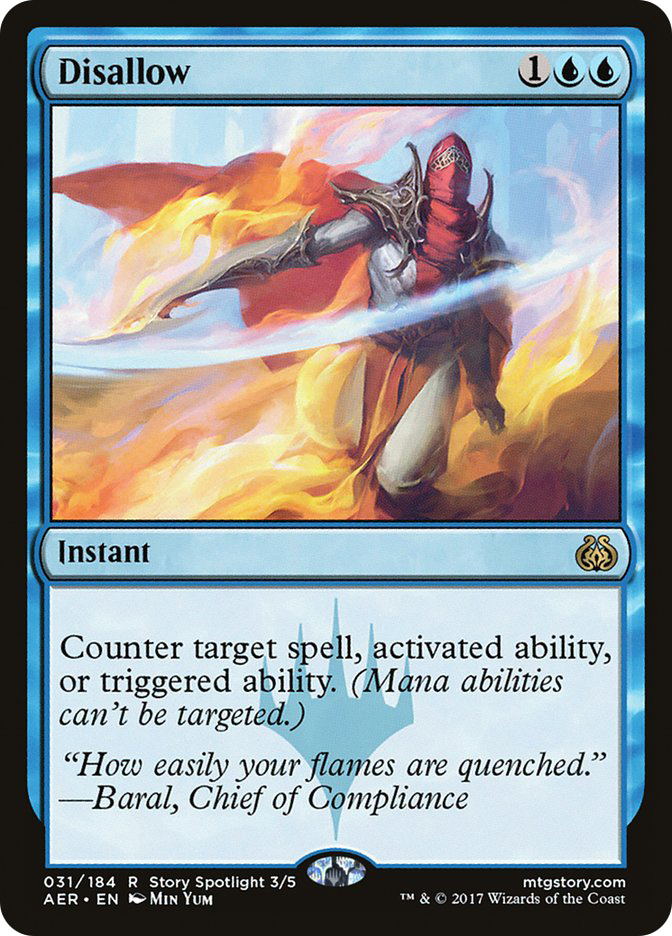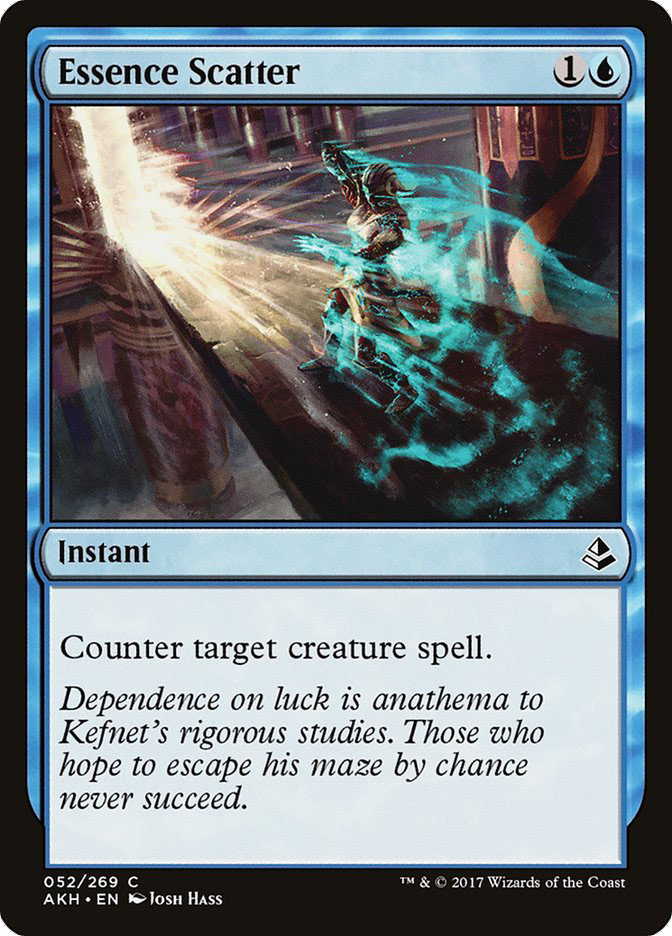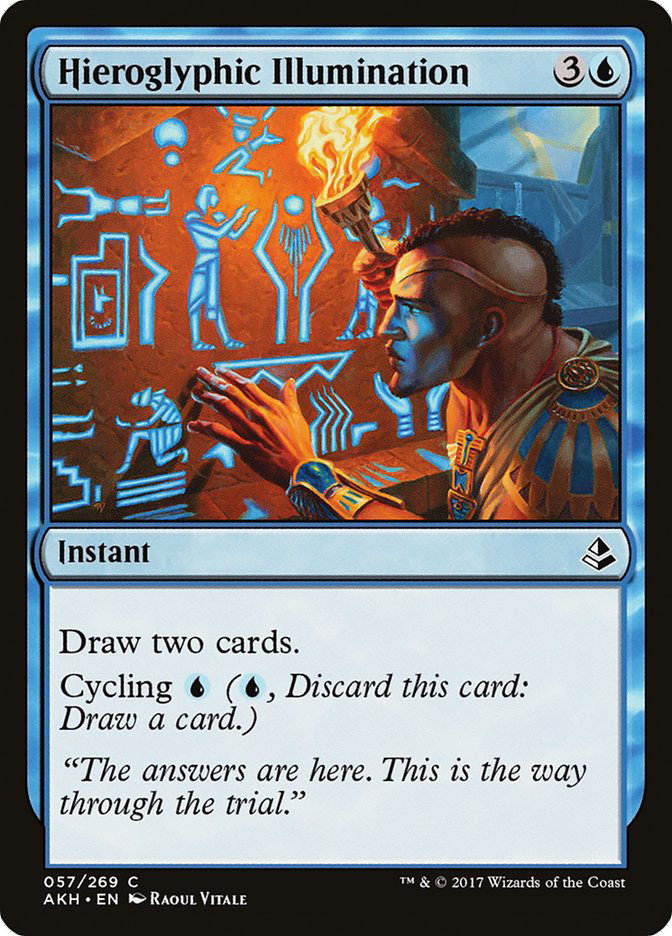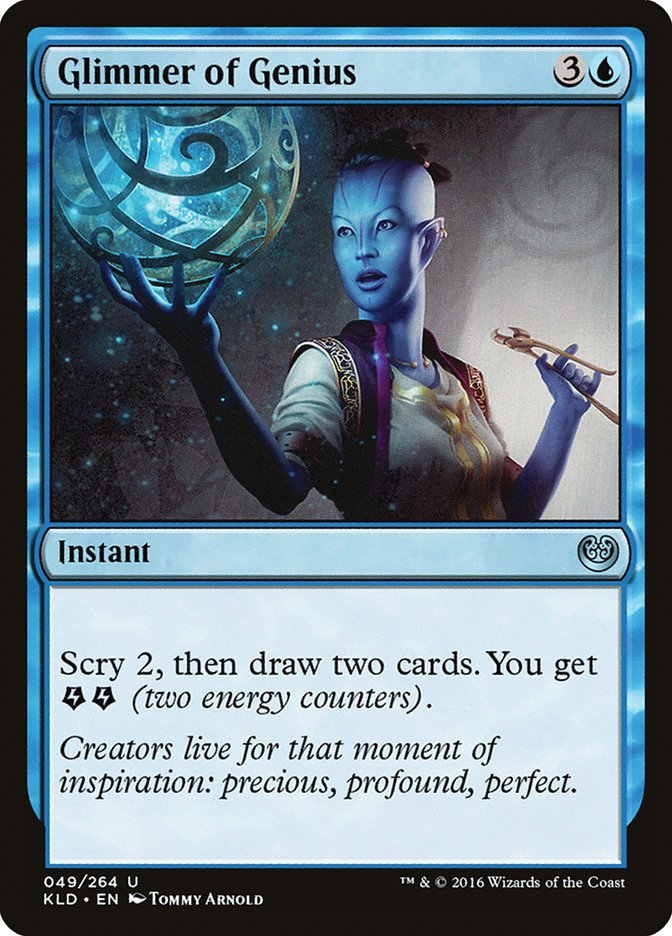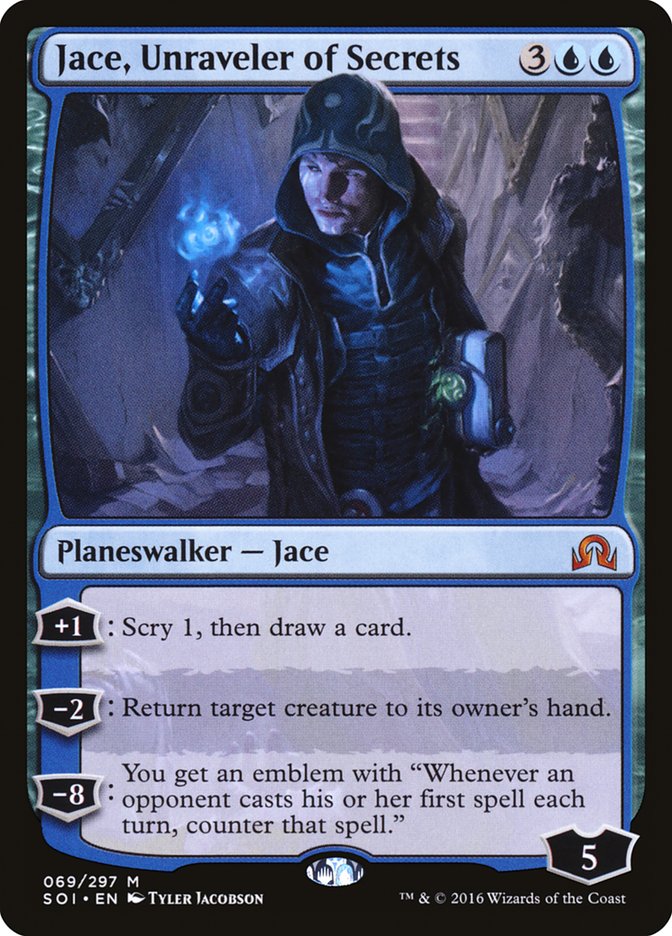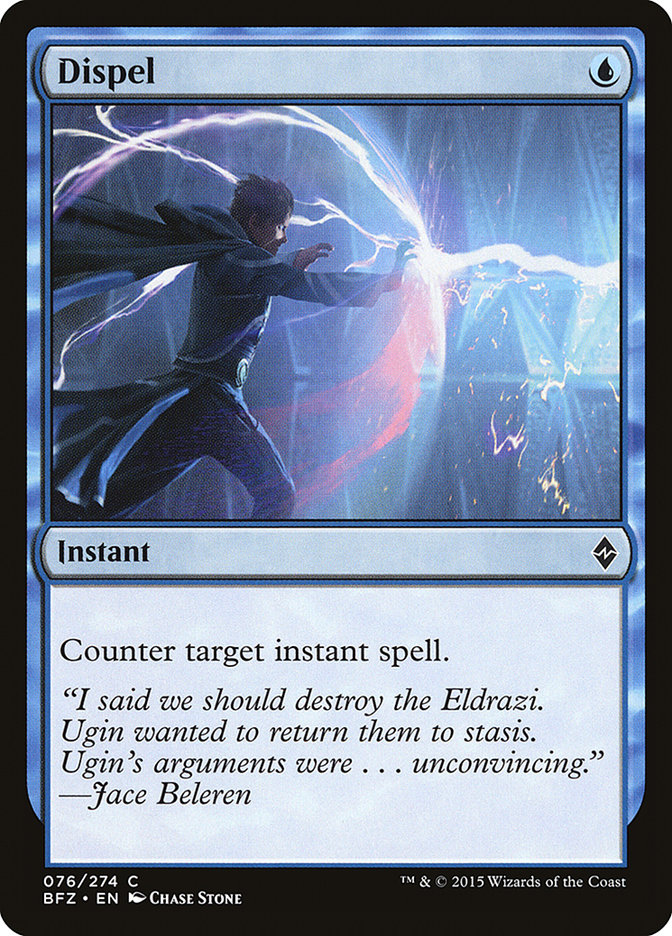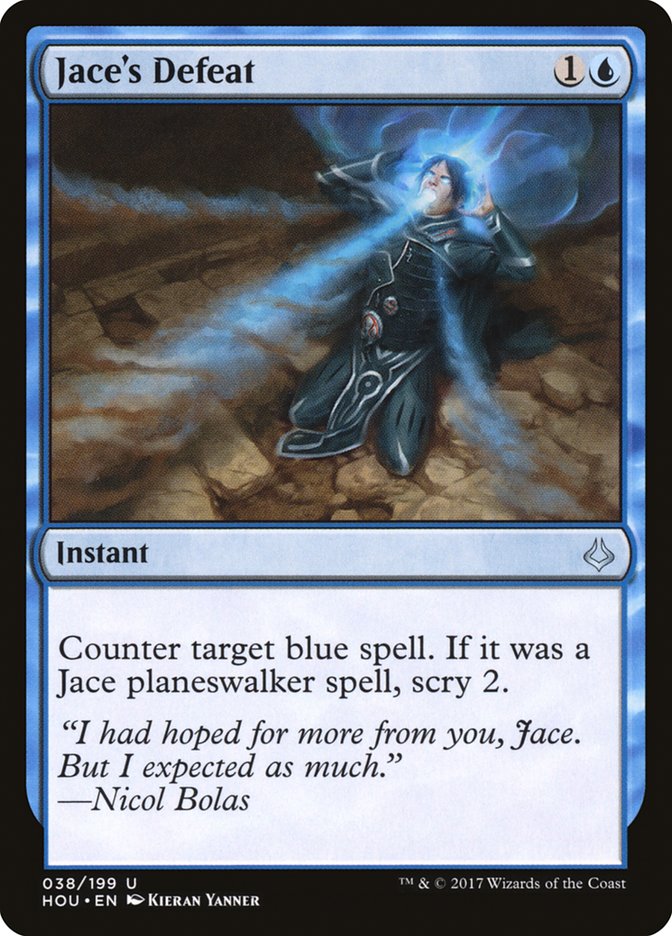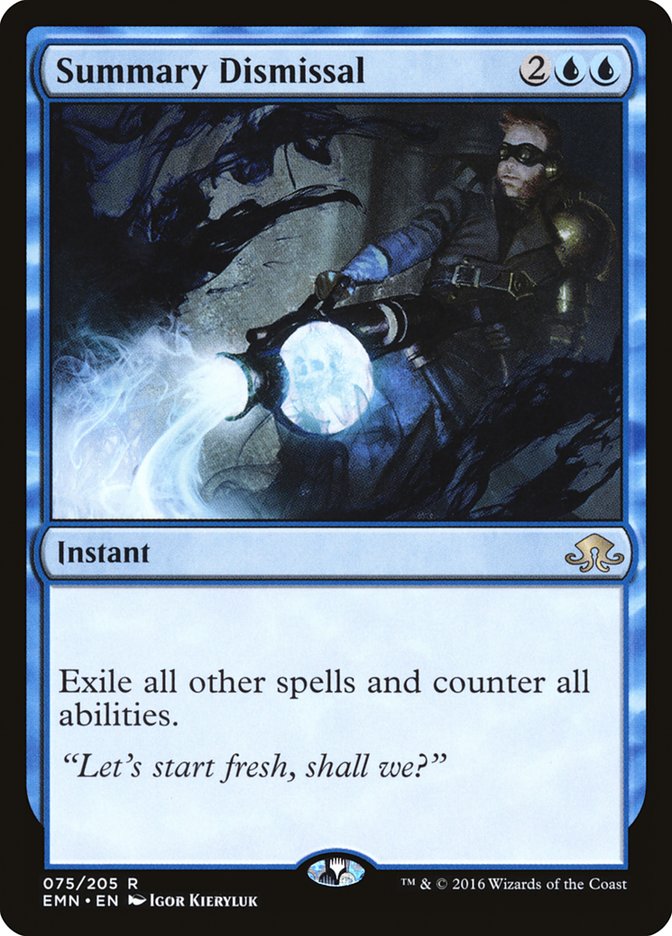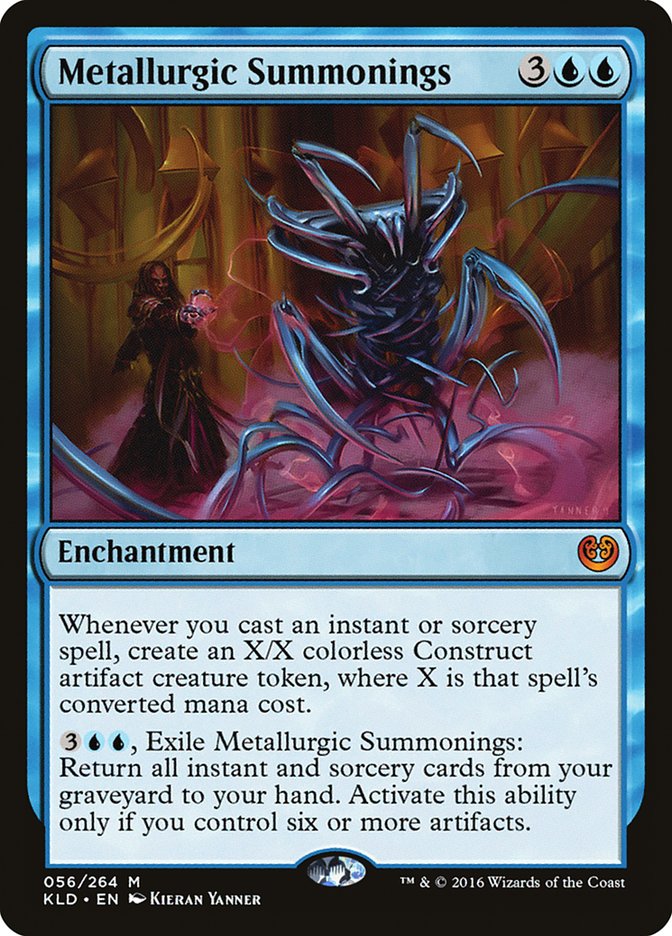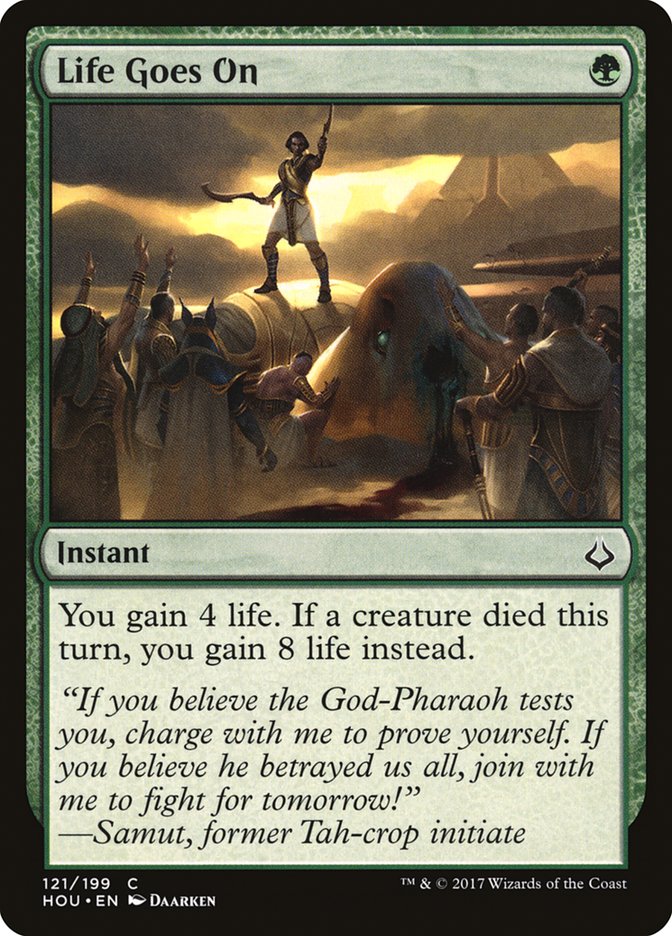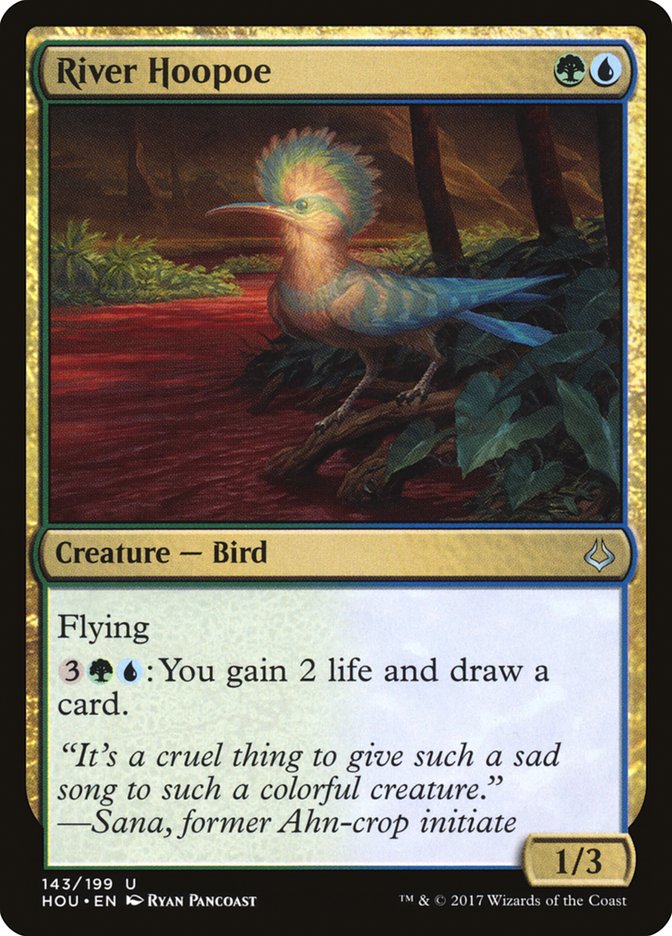The current Standard has been a joy for me. I’ve been attacking people with Earthshaker Khenra, blowing up hands with Nicol Bolas, God-Pharaoh, and casting Doomfall from the graveyard with Goblin Dark-Dwellers.
Booyah.
Before the release of Hour of Devastation, I had a lot of ideas about different decks I might want to play, but I was largely focused on Torrential Gearhulk because that was the overarching group of decks I’d been having the most success with. I got into the Top 8 of the Invitational with this deck, Temur Control:
Creatures (3)
Planeswalkers (1)
Lands (25)
Spells (31)

There were a lot of reasons that I ended up on a Torrential Gearhulk deck, but the most important reason was simple: it was the deck I had the most experience with. I’m a strong proponent of simply playing the deck you know best in mixed events like the Invitational.
I’ve been playing Torrential Gearhulk decks for a while now, and so I just followed my own advice. Temur Control was my preferred version, in large part on the back of Tireless Tracker, though Gnarlwood Dryad played an important role as a Bristling Hydra answer.
In the new world of Standard, leading into the upcoming Pro Tour Hour of Devastation, there appear to be a whole new slew of decks that have diminished some of those needs as well as new tools that are an important part of any expected metagame that you’d have to be facing down. Right now, I feel pretty comfortable saying that I’m seeing the following decks as reasonable decks to have to face down:
- Red Aggro
- Red Eldrazi
- W/U Monument
- Zombies
- U/R Control
- W/U God-Pharaoh’s Gift
- G/B Energy and/or Delirium
- Four- and Five-Color Control
- Four-Color Emerge
- Temur Energy
- Mardu Vehicles
One of the things about this huge slew of decks is that it expands your need to be able to manage a diverse array of opponents. There are a number of tools in Hour of Devastation which might make the cut in a 75 in such a world. Here are the ones that I ended up considering, to greater or (mostly) lesser degrees:
That’s actually a lot of cards to be considering, but it is worth noting that my own path on cards tends to be one where I over-consider cards, going often well below the bar of what will end up being good enough to see if something surprises me; all too often, the card we miss is the card that isn’t great in a vacuum but is surprisingly powerful in a context.
In the above huge list of cards, the ones that stick out most are probably the easiest to recognize as powerful, and they are the cards we’ve most been seeing already in U/R Control: Supreme Will, Hour of Devastation, and Abrade. Unsurprisingly, all of these cards made it into my first draft of a revamp of Temur Control.
There is a saying common in Magic: control, they say, is initially bad at the beginning of a format because you don’t know what you’re aiming at to try to manage the format.
I’ve never quite felt that that was true. If you know enough of the broad strokes, you can get things quite well-honed even without knowing exactly how the format will look. Take a look at Michael Hamilton’s winning list from the first weekend of the format:
Creatures (2)
Planeswalkers (5)
Lands (27)
Spells (26)

Are there choices that I find questionable? Sure. Are there elements that seem scattered and uncertain? Yes. But, the core of this deck looks really solid to me, despite my dislike of a number of the elements in the deck. This is undeniably a control deck, and it undeniably succeeded based on fundamental principles of control: powerful removal spells, strong countermagic, powerful cards to take the game out of reach, and sideboard cards with a plan.
Now, with more time in on the format, the format has become more clearly defined, as well, with clearer targets. For example, at this point, if you don’t have a plan to handle a deck with this card, you’re going to be in trouble:
The fast aggressive decks running red are no joke, and they are particularly good at preying on controlling decks. Dealing with them is important for anyone who is playing in a longer event. Fast red hasn’t been around for a while, but count me among those who are excited it now exists. Frankly, at this point, I’m viewing it as one of the defining pillars of the dangers faced by control, perhaps pushing Bristling Hyrda down a notch.
So, with all of that in mind, let’s see about how I went through the thought process of rebuilding Temur Control.
This is just a great control card. Dealing three damage to a target for two is fine, but when you add into the mix decks like the W/U Monument deck or God-Pharaoh’s Gift, you really actually need to be able to remove an artifact. This card is a must-have, but the question becomes “how many?”
I’m certainly at the point where I believe in the first two. After that, I think you’re talking about real estate: how much do you have to work with? The more slots you feel are reasonable, the more reasonable it is to play more. I’d be surprised if the world ever demanded four, but three in the maindeck could easily be the case in some metagames.
While I’ve seen a ton of control decks eschewing this card in favor of more counterspells or other removal, I just don’t think that that makes sense right now. I wouldn’t be caught dead with less than three in the maindeck, because otherwise, really, I think you’ll just be caught dead. It isn’t just that there are cards you actively want to exile, but that you need to preserve your life total against the most aggressive of decks. Even with Abrade in the mix, you still need to have sufficient fast removal so that your life total isn’t too low when the Rumanap Ruins come online. Eternalize means you’ll often want a creature exiled rather than simply killed.
Despite competition from Abrade, this is still the gold standard for removal, especially as people move towards running more creatures that have four toughness in order to dodge Abrade. Running four of this feels like a necessity.
This card was good before, and it’s still good now. Cycling is such a powerful ability in keeping a deck whirring on all cylinders, but at this point there are enough decks that can commit to the battlefield early, having a few sweep spells is important. I’m definitely confident in two of these, and I could imagine three in the maindeck in a fairly “going wide”-heavy environment full of Zombies and Red Aggro. Two is where I want to start.
Having this card in the mix is good. It is quite easy to get overwhelmed with removal, though, and not have sufficient counterspells or card draw to accomplish what you need to as a control deck in the mid- and late-game. If you don’t have this card in your 75, there will be problem cards that you’ll struggle to handle much more often. Punishing a Gideon, Ally of Zendikar player feels good, and there are simply many moments where a player not playing around Hour can really be devastated by the card. Still, while I initially had many more of this card, in the current moment, I’d top this out at two in any maindeck and feel much more comfortable with just one, leaving the other to the sideboard.
A lot of people have moved on from this card, but I still find it wildly useful. Especially in a world where aggro decks are prominent, having yet another card that can exile a creature or having a card that can remove two attackers from the battlefield is important. Flashing in a Torrential Gearhulk on this card can turn off otherwise vital attacks in ways that are devastating to an opponent. I believe that, as a one-of, this card is a must in a maindeck.
I used to run two of these cards maindeck, and after Hour of Devastation was printed, I cut them entirely because of the red sweeper. However, being able to handle nearly any permanent has just been too powerful of an effect, and I found myself not just wanting a return of the card to the maindeck with exactly one copy, but also a desire to have more of them in the sideboard. I prefer two in the sideboard as well, but I can see shaving the third copy of the card if you’re desperate to get in another card, like an extra Abrade or a lifegain spell to better fight aggressive red decks.
I wholeheartedly endorse four of these cards, period.
The early-game is one of the few places that you can utterly lose out, and having four of these cards does a great deal to mitigate the most powerful early-game plays. In addition, Censor is great against decks that have a powerful three-drop, which at this point is a lot of decks. Finally, the cheap cycling effect just makes for incredibly smooth draws. While cycling a Censor to draw a card is not a wildly powerful play, being able to safely play less land and fewer fully hard counters at the same time is a very powerful effect.
Here, I’ve had the effect of time change my opinion on this card. I started out liking the card a great deal, and the more that I played with the card, the more I came to realize that this was not an effect I wanted very often. In a way it was similar to a cheaper Glimmer of Genius when I was hunting for a card, and an unreliable counterspell in the late-game. As such, I felt like this card’s role was to play the amalgamation of Disallow or another hard counter and Glimmer of Genius. I started at three copies of this card, and now only feel comfortable with one copy, and I might consider cutting that copy for another spell, depending on the metagame.
Having a hard counter is important. This is my counter of choice, in large part because I feel like I have a fair amount of other cards which will exile or pseudo-exile a card, and the Stifle-like ability on countering abilities and triggers can be huge. I definitely want three, and am open to a fourth.
Here, I know that I love the card, and as long as Gideon, Ally of Zendikar is in the mix in Standard, I feel like having the first two is a must, and up to two more in the 75 is important. How many more than two that you run in the maindeck really depends on your specific metagame concerns, but I’d stop at three in most instances.
Running one to two of these cards is a great call, as you often want to stop a creature from ever hitting play. Choosing to run three in the main is also defensible if you feel like the world is very creature-heavy.
This is the best card draw spell in Standard at the moment. You need to be able to actually get to the point where you’re into a mid-game, and sometimes that means just cycling to find the right cards early. While in the deep late-game you’d absolutely prefer a Glimmer of Genius, often in the mid-game, the power of a Glimmer of Genius over this card is not as huge as the ability to have already cycled a Hieroglyphic Illumination into the graveyard to empower a turn 6 Torrential Gearhulk while still doing active things on turn 4 and 5 to respond to a battlefield.
This card is great, but ultimately, less important than Hieroglyphic Illumination unless you intend on running 26 or 27 land. More powerful, it is still also more demanding, and in the aggressive world we’re living in, you’ll find you need to cut card draw and yet you can’t cut card draw. While Glimmer is important, I certainly don’t think there is room for four of them in any list, and if you’re also running Supreme Will, I think you can shave into this card more.
We’ve gotten to a point in the metagame where about the only reason you’d need a fourth Torrential Gearhulk is if you’re aching for another finisher. Gaining card and battlefield advantage can be accomplished in so many ways, and the aggressive decks are so utterly demanding of your attention, that running four of these starts to feel problematic. Especially since Mardu still exists, despite Abrade making Unlicensed Disintegration less powerful, having that fourth copy of Torrential Gearhulk just feels like a choice to gain more power at too great a risk.
This is my go-to “secret finisher.” Having a single copy of this card can let you bury a game to the point that you can kill with basically any old thing at a late place in the game, while never having a second copy to get in the way of the first one. Especially if you have access to Memory from Commit // Memory, playing this card over a fourth Torrential Gearhulk has been a total revelation, and I think any deck running a U/R Control base is doing it wrong if they aren’t playing this card right now.
Powerful as a sideboard card. I think we’ve gotten to the place where running one or two of these is fine, but running more is saying that you expect to be playing against a ton of countermagic. This seems less likely to me at this moment, and I’d prefer more diverse answers like Negate or the next card, Jace’s Defeat.
Jace’s Defeat is a card that I think makes sense in a huge variety of numbers in a 75; running zero is completely defensible, as is running up to three. After sideboarding, a great many of the U/W decks start running their own pure countermagic, but they also often run other cards that a card like Negate couldn’t hit, like Spell Queller, Strategic Planning, Cloudblazer, and Champion of Wits. In pure control matchups, being able to stop a Torrential Gearhulk or a Nicol Bolas, God-Pharaoh is also important. The count on this card really depends on how much space you have left to play.
One of my pet cards, I find that in slow matchups, the surge cost on this is trivial. Importantly, having this card can mean that you can go into situations where you can utterly stop the opponent from their attempt to push through a powerful threat with Dispel. Finally, in some slower matchups that don’t involve counter wars, you just want another hard counter. I like this as a one-of.
To me, this is a card that speaks to one card: Ulamog, the Ceaseless Hunger. Are you certain you’ll see Ulamog? You should find room for this card. The less certain you are, the less you should try to fit in this card.
A lot of people told me that they were ecstatic to see this card in play during the SCG Invitational, and I definitely know that the card is cool. It’s also quite powerful, though. In any matchup where an opponent can’t easily get rid of it and you can expect the game to grind on, this card is an utter monster. Games end very quickly when you’re effectively adding creatures to the table with nearly every play.
This is one of the huge incentives for why to actually be Temur instead of pure U/R Control. This is one of the best cards for playing to a grinding matchup, and while you could get away with only two, in most of the matchups where you would want this card, you also want to reliably be able to put it onto the battlefield. Three would be the least I’d want to play, and in some worlds, I can easily picture wanting four, though you’d have to feel confident that you didn’t need a lot of other cards in the mix first.
One of the most important roles that Tireless Tracker can play is in the more aggressive matchups, where you can replace slower plays with this card, trading it off early or turning it into a brick wall. Every opponent has the same question mark versus Tireless Tracker out of this deck: take out a bunch of removal and have this card potentially overwhelm a game, or leave the removal in and potentially choke on removal when you need to close out a game. Even merely being able to pose this question is a huge deal, placing the opponent on the bad end of a difficult game theory proposition.
I think things are at the point with Red Aggro that you absolutely have to have some kind of instant lifegain in the mix. These are the two options that feel like they make the most sense. One or two copies of these cards is a must.
This is a strange one, to be sure, but after realizing that Rumanap Ruins was one of the few cards that was incredibly rough to answer, I realized that this wacky little bird was a card that could accomplish that work singlehandedly. Importantly, the card could also come in in other matchups as well. While slow and awkward, I have this card in my 75 as an experiment; I don’t have this solidly as a “definite” card, yet, but so far results are promising.
When you add up all of those cards, here is where I ended up with my barely Temur Control list:
Creatures (3)
Planeswalkers (1)
Lands (25)
Spells (31)

There is certainly room for play in this list. In the maindeck, depending on metagame, I could see shifting around or cutting the Negate and Essence Scatter. I could see replacing a Disallow with a Void Shatter. I could see shifting Supreme Will into another Glimmer of Genius. After that, though, I don’t see any cards that I’d actually want to change.
The sideboard has a lot more room for play, but that is largely because your targets in a controls sideboard are always varied.
I’m not playing in Pro Tour Hour of Devastation, but I’d almost certainly be playing this deck. In fact, I expect to play it at Grand Prix Minneapolis or any other Standard event I have coming up. If you’re looking for a Torrential Gearhulk deck, sleeve this one up; you’ll be glad you did.


